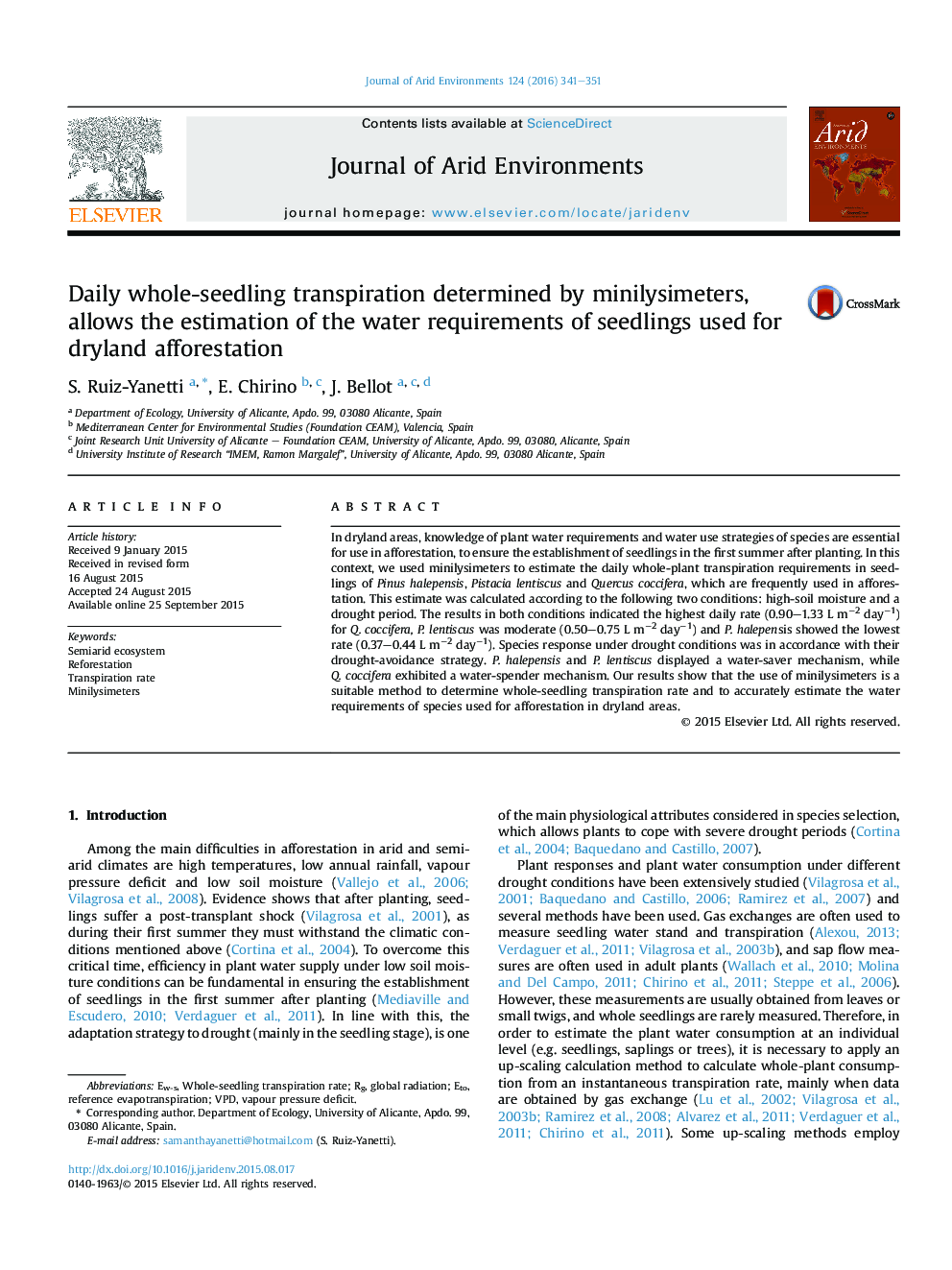| Article ID | Journal | Published Year | Pages | File Type |
|---|---|---|---|---|
| 6303316 | Journal of Arid Environments | 2016 | 11 Pages |
Abstract
In dryland areas, knowledge of plant water requirements and water use strategies of species are essential for use in afforestation, to ensure the establishment of seedlings in the first summer after planting. In this context, we used minilysimeters to estimate the daily whole-plant transpiration requirements in seedlings of Pinus halepensis, Pistacia lentiscus and Quercus coccifera, which are frequently used in afforestation. This estimate was calculated according to the following two conditions: high-soil moisture and a drought period. The results in both conditions indicated the highest daily rate (0.90-1.33 L mâ2 dayâ1) for Q. coccifera, P. lentiscus was moderate (0.50-0.75 L mâ2 dayâ1) and P. halepensis showed the lowest rate (0.37-0.44 L mâ2 dayâ1). Species response under drought conditions was in accordance with their drought-avoidance strategy. P. halepensis and P. lentiscus displayed a water-saver mechanism, while Q. coccifera exhibited a water-spender mechanism. Our results show that the use of minilysimeters is a suitable method to determine whole-seedling transpiration rate and to accurately estimate the water requirements of species used for afforestation in dryland areas.
Keywords
Related Topics
Physical Sciences and Engineering
Earth and Planetary Sciences
Earth-Surface Processes
Authors
S. Ruiz-Yanetti, E. Chirino, J. Bellot,
